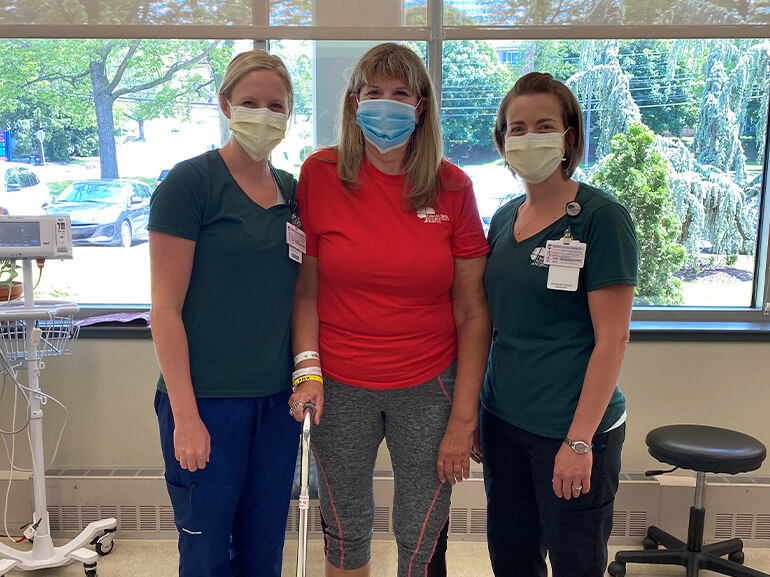Tracey's story

On May 13, Tracey Carper was at home going about her daily routine when she began feeling “a little off.” The 57-year-old airport worker felt unsteady and her left arm was tingling, which she first attributed to sleeping on it the wrong way. She realized there was something more going on when she tried to pour herself a cup of coffee and kept spilling it due to imbalance and weakness.
Upon a recommendation from her primary care physician, she went to the emergency department at UPMC Pinnacle Community Osteopathic Hospital. The doctor initially thought she had experienced a mini stroke, but as time continued, the weakness in her left arm and leg became more significant. They did head CT scan and MRI, which showed she had suffered an acute ischemic stroke.
A few days later, Tracey had stabilized and was ready to move forward and looked for a program to help her regain her independence before returning home. She chose Helen M. Simpson Rehabilitation Hospital for its strong reputation in stroke rehabilitation.
Upon admission, Tracey was unable to stand up or walk on her own. She was also unable to use her left arm, which made it difficult to perform daily living activities, such as bathing and dressing. Her main goals included being able to walk, take care of herself and hold her newborn grandchild.
Tracey worked toward these goals each day with a great amount of motivation and determination, even requesting extra therapy on the weekends.
In occupational therapy, Tracey was challenged daily with a variety of exercises incorporating weight-bearing through her affected arm. She participated in pushing and pulling exercises, reaching tasks, laundry, kitchen mobility, meal preparation and even golfing.
In physical therapy, Tracey performed exercises that focused on lower extremity strengthening and core stability. Typical exercises were quadruped (involving all four extremities), inclined push-ups and tall kneeling that incorporated active weight-bearing. Squats, single-leg standing balance and lunges were all things performed daily. She also practiced transferring from the floor to a chair and vice versa. Near the end of her stay, she challenged herself by walking around the hospital, to the therapy gym and gift shop.
Her "ah-ha" moment came when she was able to help the occupational therapist move her arm for the first time.
In addition to encouragement from her care team, Tracey experienced a tremendous amount of support from her family and friends. They helped her to persevere when she felt like times were getting tough.
After two and a half weeks, Tracey was ready to return home. Upon discharge, she could walk independently with a cane, negotiate 12 steps and perform all hygiene independently. She also gained muscle tone in her left arm.
When asked about her overall rehabilitation experience, Tracey said it was excellent and she felt like she was pushed to the limit every day, while her therapists always made her feel like she could do it. Tracey's words of wisdom after going through this process are to “think positive, push yourself to the limit and never stop believing you are going to walk.”